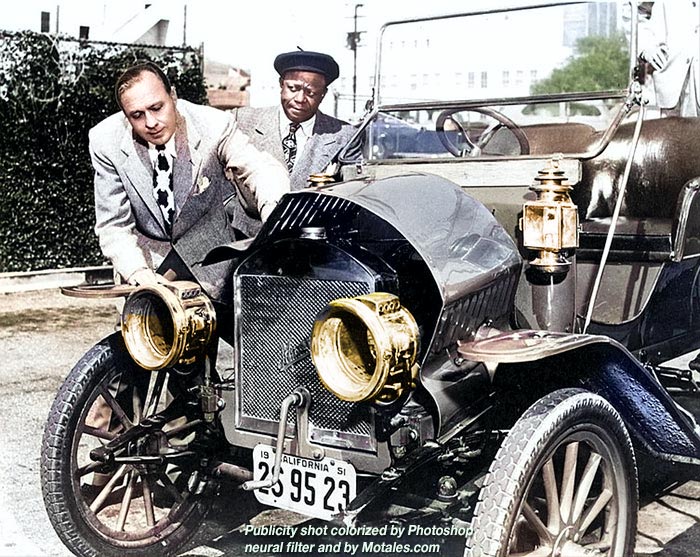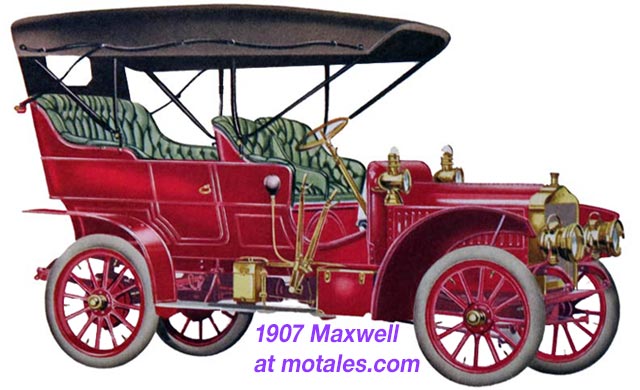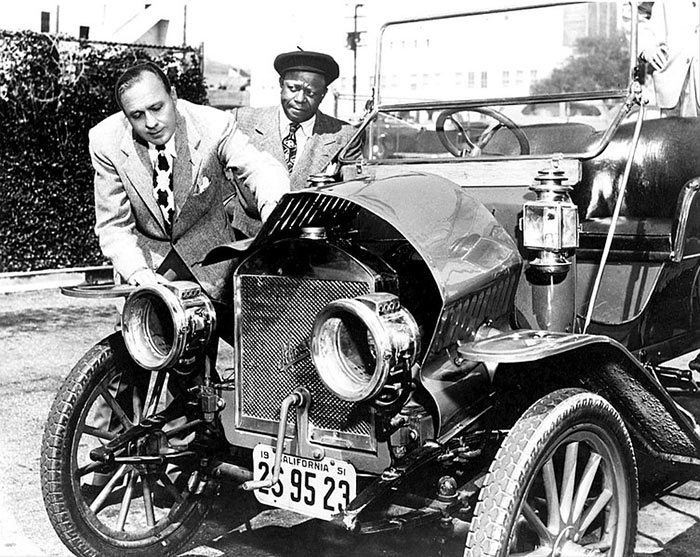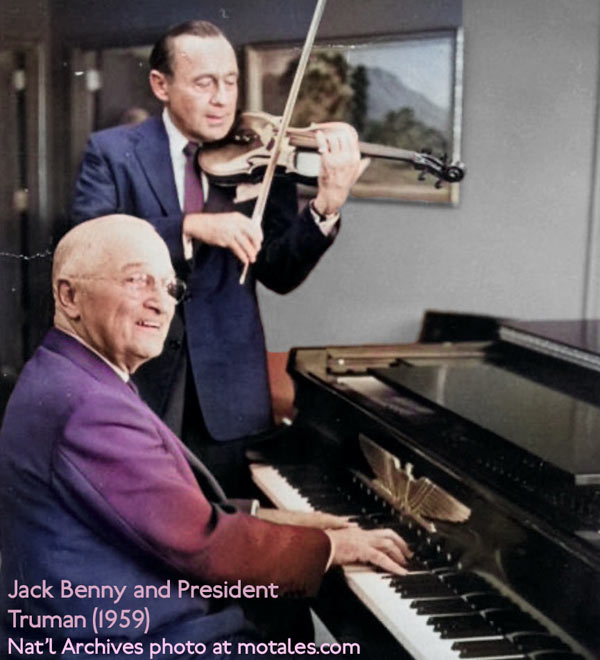Jack Benny famously drove (on the air) a venerable Maxwell car. It wasn’t a collector car when he started appearing on the radio; it was more like the equivalent of a battered old Dodge Caliber.

At the turn of the century, industrialist Ben Briscoe hired Jon Maxwell to build a new car. The original 1904 Maxwell was popular, and Briscoe built numerous factories to make it before going on a buying spree which bankrupted the company. Walter Flanders bought the remains, swapped out the aging Maxwell cars for his own (renaming the Flanders to the Maxwell). After Flanders retired, Maxwell again started to fail, and Walter Chrysler stepped in with expert engineers to fix the car’s troubles and to create a car in his own name—the Chrysler. After 1925, the Maxwell was upgraded and sold as the “Chrysler Four” (the original 1924 Chrysler was a six) then upgraded again to be the “new” Plymouth.
Meanwhile, Jack Benny was gathering fame as a suave, sophisticated vaudeville master of ceremonies who deprecated himself with humor. His 1932 radio show quickly used all his existing material, and he hired Harry Conn to make more. Conn (paid entirely by Benny himself) had the cast mock the suave-sounding Benny; and eventually Conn gave Jack Benny a car to match his new image—something clearly outdated, worthless, and obsolete.
The Maxwell, not sold since 1925, was ideal for this role in the 1930s. Arthur Frank Wertheim, in his excellent book Radio Comedy (1979, Oxford University Press), recounted its first “appearance:”
[Mel Blanc] noticed that the sound-effects man did not have the equipment to play a phonograph record of an automobile motor. Blanc volunteered to do an imitation of Benny's old car coughing and sputtering. His rendition was so funny it became a regular feature.
Jack Benny (the on-air persona) was clearly not treating the car as a beloved possession. Wertheim reprinted part of the script:
JACK: Now come on, Rochester, we've gotta get to the studio. . . I don't want to be late.
ROCHESTER*: Yes sir .... I'll start the car.
[Mel Blanc makes the sounds of an old motor trying to start up, winding up with a duck call as the engine dies.]

JACK: Hmm, did the motor die again?
ROCHESTER: It died twenty years ago, you just won't bury it.
JACK: Well ... I have been thinking of getting a new car ... but I don't know what kind I'd like.
ROCHESTER: Why don't you get one of those new Hudsons* .... They're so streamlined ... honestly Boss ... they're so low you step down into them.
JACK: Well, you step down into this car.
ROCHESTER: I know, but the Hudson has a floor.

Original unretouched studio photo, likely taken for Jack Benny movie rather than his later television show
In another skit, according to Scott Gresser, Rochester called Jack at 11:05 in the morning to tell him the Maxwell had been stolen. Jack asked when it happened, and Rochester said it was taken at 10:30 AM and he let the police know at 10:50 AM. When Jack then asked Rochester why it took so long for him to call the police, Rochester replied that he called them when he stopped laughing.
The Maxwell, once brought in, was never dropped, though Jack Benny’s show continued for decades. By the 1940s, it served only because the joke was known to the listeners—and his show went on until 1965, on television. The producers had to find an actual Maxwell for use on the big screen when Jack Benny, at the height of his popularity, took his persona to the big screen; but then, they also needed it when he had a television program. They pushed the joke perhaps a bit too far, giving him a 1907-era car; it would already be 25 years old when his radio show began, making it a vintage showpiece rather than a cheap used car. On the other hand, the 1907 Maxwell was actually engineered by Jon D. Maxwell himself—long before he took over running Maxwell-Briscoe in 1910. Jon had worked with Ransom Olds on the famed “curved dash Oldsmobile,” the first car made on an assembly line. A 1910 auto history credited Maxwell with “the unit power plant, multiple-disc clutch, and thermo-syphon system of cooling with the radiator in front of the engine;” Maxwells were also early adopters, though not inventors, of the steering wheel when tillers were still popular.

Because of Jack Benny and Harry Conn, not to mention Mel Blanc, many Americans know Maxwell—if they know it at all—solely as the dilapidated, obsolete, sad car of Jack Benny. The story of the early cars’ innovation, of how Ben Briscoe and Billy Durant dreamed up General Motors, of how Zeder, Skelton, and Breer turned a flawed car into the Good Maxwell which then became the Plymouth, are all forgotten history for most—but some still know Jack Benny’s Maxwell.
* Played by Eddie Anderson, Rochester became Benny’s valet in late 1937; his role was stereotypical but at least better than most African-Americans on radio, who were often played by whites. His role changed quite a bit over the years. Kathryn H. Seeley, in Jack Benny and the Golden Age of American Radio Comedy, wrote that he was“a hit with both white and black audiences, despite—and because of—racial attitudes of the day. Rochester’s witty retorts to the boss... helped to keep the Benny program high in the ratings, made Anderson the most prominent black performer in broadcasting before 1960, and earned him an income of upwards of $150,000 per year.”
** The upscale-but-still-mainstream Hudson had a “step-down” floor lower than that of most cars, so the car could have the “long and low” look while still leaving a good deal of headroom; it also lowered the center of gravity, improving the handling. Harry Conn had no way of knowing that Hudson, via AMC, would eventually join the former-Maxwell family.
Copyright © 2021-2025 Zatz LLC • Chrysler / Mopar car stories and history.
YouTube • Editorial Guidelines • Videos
Tailfins Archive • MoTales on BlueSky